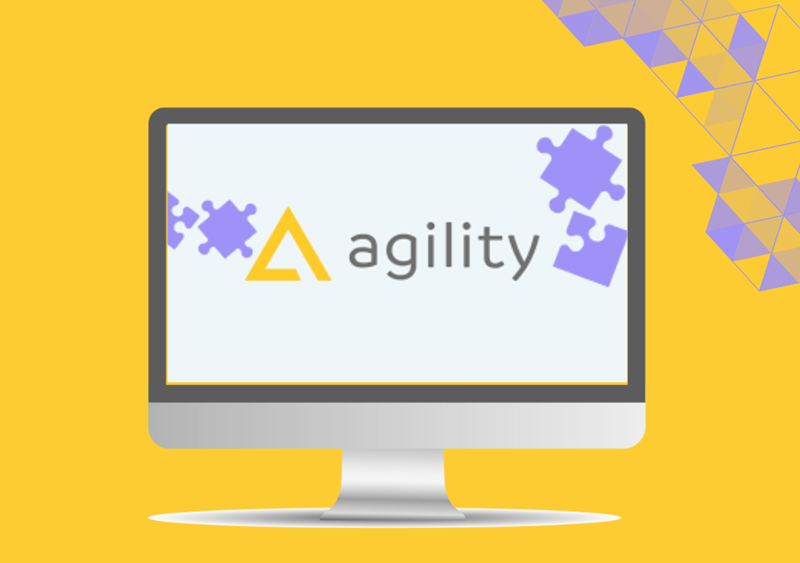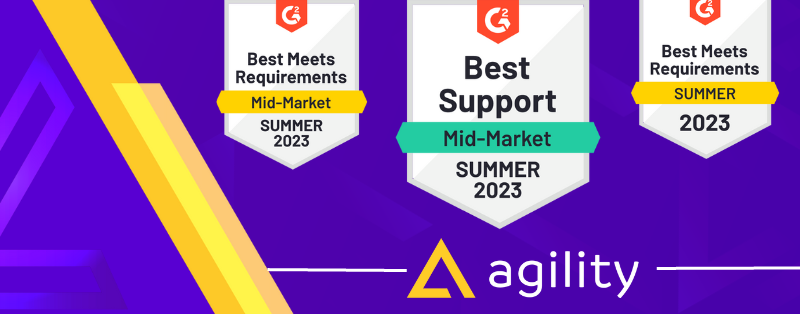The Birth of Agile: A Ski Resort Revolution
In February 2001, seventeen software developers and thought leaders gathered at the Snowbird ski resort in Utah to revolutionize software development. Tired of rigid methodologies, they created the Agile Manifesto, a set of principles that would transform software development and, eventually, marketing.
The Manifesto emphasized:
- Individuals and interactions over processes and tools
- Working software over comprehensive documentation
- Customer collaboration over contract negotiation
- Responding to change instead of following a pre-set plan
These principles underpinned a sea change in the approach of development teams, making them far more responsive to customer needs and market changes.
💡Key Point:
The Agile Manifesto revolutionized software development by prioritizing flexibility, collaboration, and customer focus over rigid processes and plans.
Marketing Catches the Agile Bug
Fast forward to June 2012.
A group of forward-thinking marketers meeting in San Francisco created the Agile MARKETING Manifesto. Inspired by the success of agile methodologies in software, it aims to bring the same adaptability and responsiveness to marketing.
The Agile Marketing Manifesto emphasizes validated learning over opinions. Conventions, customer-focused collaboration over silos and hierarchy, and adaptive campaigns and responding to change over following a plan.
Understanding Agile Marketing
Agile marketing is based on adaptability, speed, and continuous improvement. Instead of long-term planning, agile marketers work in short sprints, testing, learning, and adjusting. It's like a surfer riding the waves of market trends, customer feedback, and performance data.
Why Agility Matters
In today's world, consumer habits shift on a dime, making agility not just nice but a necessity. Traditional marketing approaches struggle to keep pace with:
- Shifts in consumer behavior
- Evolving digital landscapes
- Rapid technological changes
💡Key Point:
Agile Marketing is crucial in a rapidly changing digital landscape. It allows marketers to adapt quickly to shifts in consumer behavior and technology.
The Agile Advantage
Agile marketing allows marketers to:
- Pivot quickly
- Capitalize on emerging opportunities
- Address challenges in real time
This approach factors in the ever-evolving consumer landscape and the continual technological shifts underpinning it, ensuring marketing strategies remain relevant and focussed.
The Key Principles of Agile Marketing
Agile marketing is guided by several core principles that enable teams to be responsive, efficient, and customer-focused:
Customer Focus
- Put on your customer goggles and see the world through their eyes. Prioritize valuable content that solves their problems rather than just filling your content calendar.
Iterative Approach
- Stay flexible. Agile teams run lean, embrace change, and are ready to pivot when the data says, "Change course!"
Data-Driven Decision Making
- Let numbers be your North Star. Use analytics and metrics to guide your strategies.
Cross-Departmental Collaboration
- Tear down those departmental walls! Foster collaboration across departments and get outside of your bubble.
Rapid Deployment
- As Steve Jobs said, "Real artists ship." Focus on getting content out quickly and frequently before the coffee gets cold.
Continuous Testing and Learning
- Experiment, experiment! Validate your theories, learn what works, and disregard the rest.
Flexible Planning
- Keep your plans flexible. Agile marketers adapt to insights and changes faster than you can say "pivot."
Transparency
- Use tools like Kanban boards to make your work as visible as a giant neon sign on a Vegas strip.
Constant Improvement
- Review regularly, and always look for ways to optimize and improve. In an agile world, if you're standing still, you're moving backward!
💡Key Point:
Agile Marketing principles focus on customer-centricity, data-driven decisions, rapid deployment, and continuous improvement, enabling marketers to stay relevant and effective.
Where next?
Now that we've set the stage let's embark on a whirlwind tour of the agile marketing landscape. We'll use Agility CMS as our vehicle—not because it's the only option, but because its principles align with the agile mindset we're exploring.
So, if you’re ready to transform your marketing department from a lumbering giant into an agile ninja, step aboard - we're about to head out into the vast seas of content marketing!
Oh, I nearly forgot to ask you. Did you bring a pirate hat? ;)
Charting Your Course: Practical Tips for Agile Marketing
Ahoy there, aspiring agile marketers! Now that we've explored the treasure map of agile principles, it's time to chart your course.
Here are some practical tips to help you navigate the choppy waters of agile marketing implementation. Implementing them might very well be transformational!
Start with a Small Crew: Begin your agile journey with a small team. Choose members from different disciplines. This diversity will help you navigate challenges and spot opportunities.
Set Your North Star: Define clear, measurable objectives for your agile initiatives. These are your guiding lights that help you stay on course. Whether it's increasing engagement, boosting conversions, or improving customer satisfaction, ensure your objectives are specific and quantifiable.
Create a Kanban Treasure Map: Use a Kanban board to visualize your workflow. Use tools like Trello or Jira to create columns for "To Do," "In Progress," and "Done." This visual representation helps your crew understand priorities and track progress at a glance.
Embrace the Sprint: Think of sprints as short voyages in your longer journey. Typically lasting 1-2 weeks, sprints help you focus on specific tasks and objectives. At the end of each sprint, evaluate your progress, learn from any mishaps, and plan your next short expedition.
Hold Daily Stand-ups: Just as a ship's crew gathers each morning for orders, hold daily stand-up meetings. Keep them short (15 minutes max) and focused. Each crew member should share what they did yesterday, what they're doing today, and any obstacles they face.
Hoist the Feedback Flag: Regularly seek input from customers, stakeholders, and team members. Use this feedback to adjust your course.
Chart Your Progress:
Track key metrics to keep a logbook of your journey. Use analytics tools to measure the impact of your marketing efforts. This data will help you inform future decisions.
Celebrate Small Victories: Every piece of treasure counts, no matter how small. Celebrate your team's victories, whether a successful campaign, a problem solved, or a lesson learned.
Stay Flexible in Your Route: The sea of marketing is ever-changing. Be prepared to adjust your sails when the winds shift. Don't be afraid to change course if a strategy isn't working. Agility is about adapting to new information and opportunities.
Continuously Improve Your Ship: Gather your crew after each voyage (or sprint). Discuss what worked, what didn't, and how you can improve.
💡Key Point:
Implementing Agile Marketing involves starting small, setting clear objectives, visualizing workflows, embracing sprints, and continuously gathering feedback and improving processes.
Agility CMS: Your Vessel for Agile Marketing
Now that we've charted the waters of agile marketing let's explore a tool that can help us navigate these seas. Enter Agility CMS, a robust vessel for your agile marketing journey.
Agility CMS is a powerful platform that supports agile marketing by providing flexible, scalable content management.
Key features include:
- Headless Architecture: Allowing your content to sail smoothly across various digital channels.
- Content Modeling: Efficiently organize your content cargo for easy access and reuse.
- Workflow Management: Keep your crew's efforts synchronized for timely content delivery.
- API Integration: Seamlessly connect with other tools in your fleet.
Let's take a closer look at what Agility CMS offers:
A 360-Degree View of Your Content Landscape
Agility CMS provides a comprehensive view of your content ecosystem. With its intuitive dashboard, you can survey your assets, workflows, and metrics at a glance, much like a captain scanning the horizon from the ship's bridge.
Steering Your Content with Ease
The platform puts you at the helm of your content strategy. It's responsive and intuitive, giving you full control over your content's direction and deployment.
Adapting to Any Content Waters
With its headless architecture, Agility CMS navigates effortlessly through various content channels. Whether you're sailing through websites, mobile apps, or IoT devices, your content adapts to reach its destination effectively.
Organizing Your Content Treasure
Agility CMS's content modeling is like having a well-organized cargo hold. It keeps your content structured and easily accessible, ready to be deployed for any campaign or channel at a moment's notice.
Timely Content Delivery
The workflow management feature ensures your content reaches its audience right on schedule. Set up custom workflows, assign tasks to your team, and keep your content production sailing smoothly.
Seamless Integration with Your Marketing Fleet
Agility CMS comes equipped with robust APIs, allowing it to integrate seamlessly with other tools in your marketing technology stack—this creates a powerful fleet of tools ready to tackle any marketing challenge.
Tools for Your Technical Crew
Agility CMS provides a full set of advanced tools for your team's more technically inclined members. With features like custom modules, webhooks, and CLI tools, your developers can customize and extend the CMS to fit your needs.
Navigating with Data-Driven Insights
Built-in analytics provide valuable insights into your content's performance. Use this data to adjust your course, like a skilled navigator uses instruments to chart the best route.
💡Key Point:
Agility CMS supports Agile Marketing with its flexible architecture, intuitive content management, and robust integration capabilities, enabling marketers to adapt quickly to changing needs.
Agility in Action: Real-World Applications
To illustrate the practical benefits of agile content management, let's briefly examine how Agility CMS has addressed real-world challenges for two diverse organizations.
Mitsubishi Electric Power Products, Inc. (MEPPI)
MEPPI needed to manage content across multiple markets and industries while supporting rapid innovation.
Results with Agility CMS:
- Efficient website rebuild and launch
- Content management across three markets, 16 industries, and multiple products
- Seamless content expansion for new products and industries
Key benefit: Independent management of design, content, and development, enhancing overall digital agility (Link).
Scotiabank
This major Canadian bank required secure website launches for new international markets while maintaining strict security standards.
Agility CMS provided:
- Secure, separate content instances for each country
- Consistent compliance with rigorous security audits
- Empowerment of regional teams for independent content management
Key benefit: Streamlined security and compliance across six Latin American countries, ensuring consistency and safety (Link).
💡Key Point:
Real-world examples from Mitsubishi Electric and Scotiabank demonstrate how Agility CMS can enhance digital agility, streamline content management across markets, and ensure security compliance.
Wrapping It Up: The Agile Content Revolution
As we reach the end of our whirlwind tour through the world of agile content management, let's take a moment to recap the key points we've covered:
- The content problem:
- Traditional CMS platforms are often inflexible and struggle to keep up with the demands of modern digital landscapes.
- Enter the headless hero:
- Agility CMS and similar headless CMS solutions offer a more flexible, scalable approach to content management.
- Key features that matter:
- Content modeling that adapts to your needs
- API-first approach for seamless integration
- Omnichannel delivery capabilities
- User-friendly interfaces that don't require a PhD to operate
- Real-world impact:
- We've seen how organizations like MEPPI and Scotiabank have leveraged agile content management to transform their digital presence and overcome complex challenges.
- The agile advantage:
- Whether you're in manufacturing, finance, or any other industry, an agile approach to content management can help you respond faster to market changes, improve collaboration, and deliver better experiences to your audience.
Conclusion
Agile content management is more than a strategy; it's a mindset that values flexibility, efficiency, and continuous improvement. It's about empowering teams to create, manage, and deliver content in ways that meet your audience's ever-changing needs.
So, are you ready to embrace the agile content revolution? Agile content management is a mindset that values flexibility, efficiency, and continuous improvement.
Welcome aboard, Captain. Let’s make waves!
💡Key Point:
Agile content management is not just a strategy but a mindset that empowers teams to create, manage, and deliver content flexibly and efficiently, meeting the audience's ever-changing needs.




